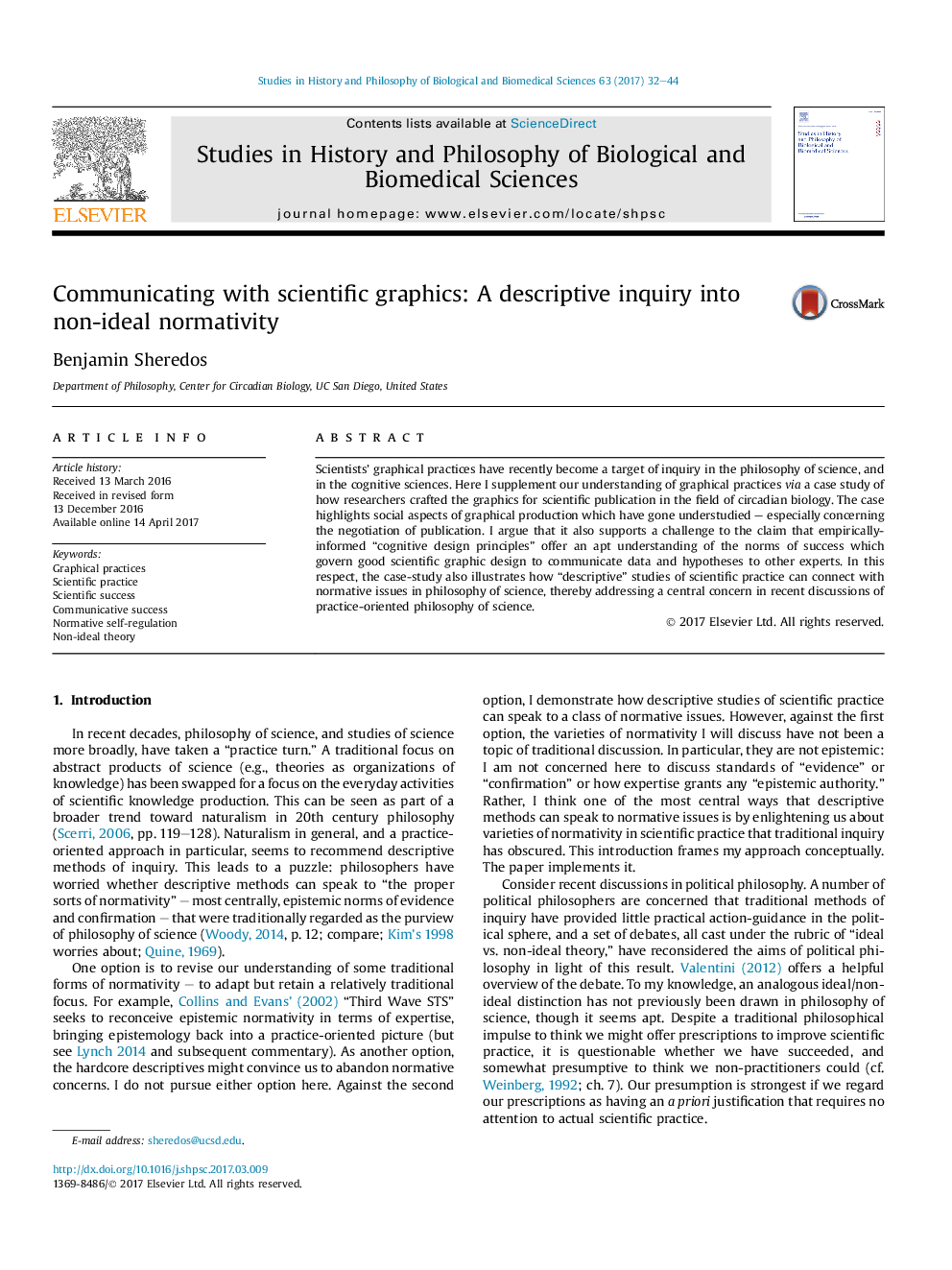| Article ID | Journal | Published Year | Pages | File Type |
|---|---|---|---|---|
| 5130513 | Studies in History and Philosophy of Science Part C: Studies in History and Philosophy of Biological and Biomedical Sciences | 2017 | 13 Pages |
â¢A novel case study method reveals scientists' practices of graphical production.â¢It is demonstrated that descriptive analysis of scientific practice can address normative issues.â¢The case shows cognitive design principles are not norms of expert practice.â¢Social aspects of graphical practice are highlighted, which demand further analysis.
Scientists' graphical practices have recently become a target of inquiry in the philosophy of science, and in the cognitive sciences. Here I supplement our understanding of graphical practices via a case study of how researchers crafted the graphics for scientific publication in the field of circadian biology. The case highlights social aspects of graphical production which have gone understudied - especially concerning the negotiation of publication. I argue that it also supports a challenge to the claim that empirically-informed “cognitive design principles” offer an apt understanding of the norms of success which govern good scientific graphic design to communicate data and hypotheses to other experts. In this respect, the case-study also illustrates how “descriptive” studies of scientific practice can connect with normative issues in philosophy of science, thereby addressing a central concern in recent discussions of practice-oriented philosophy of science.
